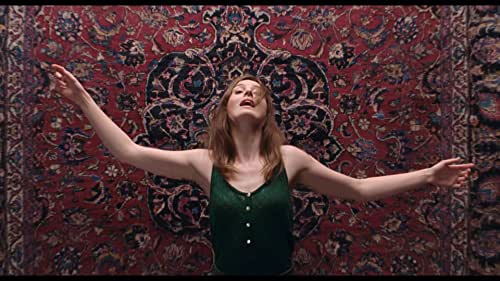
According to everything I’d heard about The Worst Person in the World, I’ve dated this girl about four or five times, and that is exactly the case, because she’s a completely normal young woman.
Oslo- In The Worst Person in the World, Julie (Renate Reinsve) goes from training to be a doctor to a therapist to a photographer, blitzing her way through four lovers in the process to accompany each life, and that’s just the prologue. Then, over 12 more chapters, she sticks with the photography thing and stays committed mostly to Aksel (Anders Danielsen Lie) or Eivind (Herbert Nordrum).
The Worst Person in the World tries to go straight to the place where the line between genuine wounds from past relationships and simple misogyny suddenly becomes blurry, but instead it goes straight to simple misogyny. Writer/director Joachim Trier is an unmarried 47 year old, and he’s cast Danielsen Lie, who has played lead roles for him twice before, as a famous provocateur who gets dumped because he’s dating a woman more than a decade younger than him. This woman is designated The Worst Person in the World in the movie’s title, and there’s a whole prologue to make her out like a giant whore. This is an ugly thing.
It also tries to come perilously close to being a movie about those damn millennials, but instead goes straight to being a movie about those damn millennials. Hinging on the age gap between Aksel, 43, and Julie, who celebrates her 30th birthday in the runtime, a key detail as the last of us approach “the big three-oh,” this was inevitable, and the film will play almost exclusively for older audiences, at least in the U.S.
As a movie for millennials instead of about them, it does work. Trier has said he wanted to make an anti-romantic comedy transitioning into a coming-of-age story, a sort of musical without music, and he hits this mark, particularly working Julie’s anxiety about having children and with sweeping set pieces, like the showstopper when time freezes so she can run off to be with Eivind in the same moment she realizes her relationship with Aksel has calcified and stagnated or the excellent mushroom scene.

There’s no real sense of time here, only the movie’s artificial chapter bounding. Everything in the prologue cut to make Julie look like a ditz could have happened over the course of 10 years, and must have taken at least two. Perspective and the question of whether we’re supposed to be judging Julie or sympathizing with her becomes more important as the movie moves along, but the perspective shifts so often it’s hard to pin down – we move from one to the other just from prologue to main body, and there’s also narration (Ine Jansen) that keeps popping up over key scenes. The narrator’s summary of the scene plays over the dialogue as if the summary or memory of the scene is more important than the scene itself. In the prologue, I thought it was Julie’s mother narrating, but really I have no idea who’s perspective it’s supposed to be.
Trier said he and cowriter Eskil Vogt were excited to write from a woman’s viewpoint, but The Worst Person in the World isn’t from Julie’s viewpoint at all. It’s the feature-length paranoia of a jealous boyfriend, obsessed with her sex life and thinking of almost nothing else. This isn’t just a petty and unfair presentation of women that stinks of sour grapes, it’s the narrative we’ve been feeding ourselves of millennials as these horribly indecisive people – and also that this indecision is a bad thing. It ties into the idea that we don’t get to make these decisions, that we don’t get to not be ready for kids or screw around and discover ourselves the way Julie does.
Is this normal? Should I have this degree of contempt for the women who’ve sifted through my life? It doesn’t seem healthy. The film certainly expects viewers to agree with a negative assessment of Julie, at least at the beginning, and I have gotten pretty sick of her stock “you deserve better” break-up lie. Perhaps the disconnect is that this assessment isn’t supposed to be negative as much as a back-handed compliment – “I support you, Julie, even though you’re a giant whore and I think that’s the first thing people should know about you.” It’s tough to believe when it’s phrased like that.
I can’t get passed how angry I would be if someone I cared about had her sexual history wrung out the way The Worst Person in the World wrings out Julie. Her being a fictional character, which I strongly suspect she isn’t, in a lot of ways makes it much more disturbing.
The Worst Person in the World is a well-made movie with inventive scenes and evocative moments, and I don’t like it. I don’t give myself permission to think about women and love in the ways this movie requires. There’s nothing wrong with art coming from bitter places, but when the art itself is calcified in that bitterness, is stagnated in the condescension and misogyny that wrought the coming-of-age and romantic comedy genres in the first place, that’s a problem.
Leopold Knopp is a UNT graduate. If you liked this post, you can donate to Reel Entropy here. Like Reel Entropy on Facebook and reach out to me at reelentropy@gmail.com.

Pingback: ‘Compartment No. 6’ not a movie for 2022 or the 21st Century | Reel Entropy